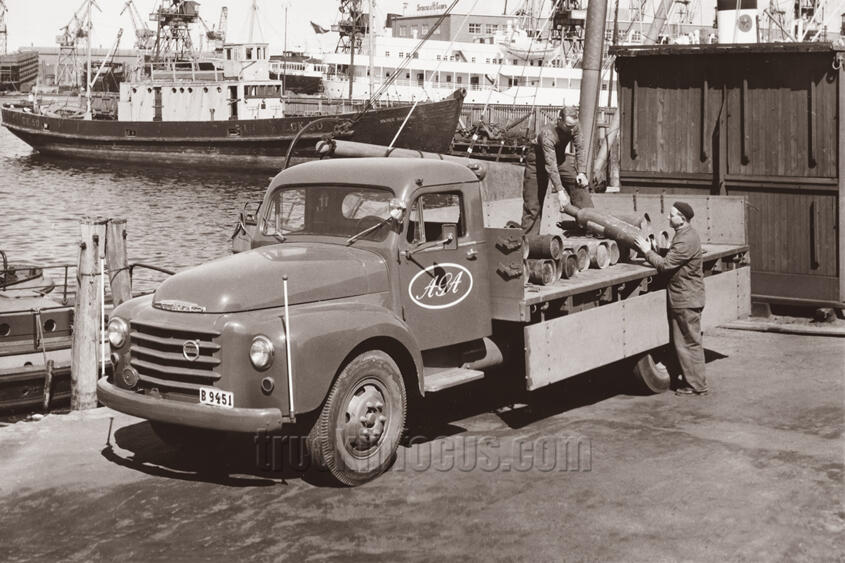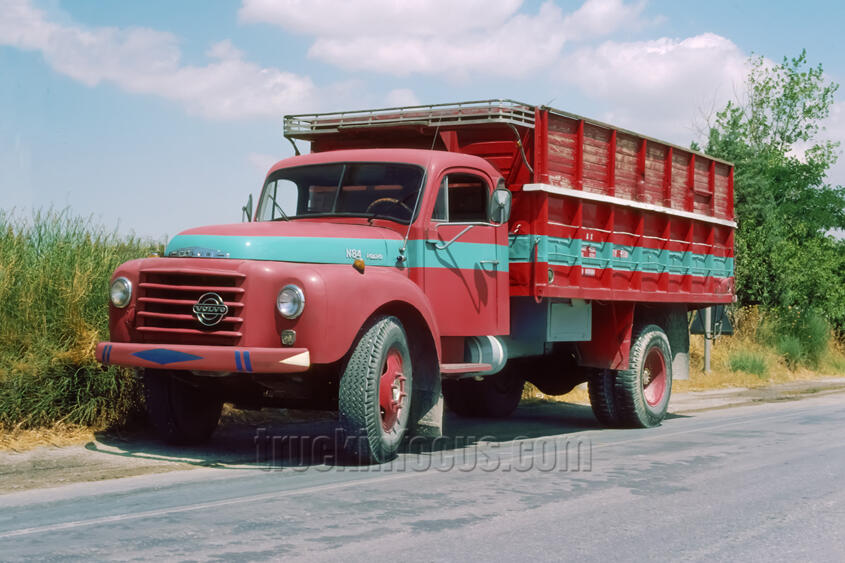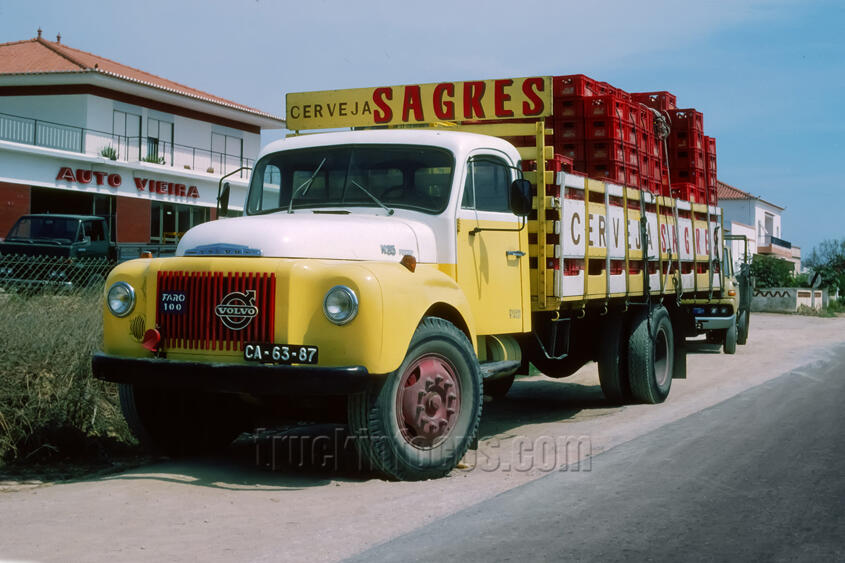The Volvo Chronicle
Page 3
By Christoph Büch (Berlin 2024)
First diesel engines
In the thirties, Volvo trucks ran on the proven but thirsty gasoline and Hesselman crude oil engines. During the years of World War II, Volvo offered engines converted to wood gas. However, their performance could not compete with engines powered by liquid fuel. Inevitably, a new task loomed: the design of diesel engines.
During the war, Volvo built special four-wheel-drive vehicles for the military, the TVB conventional and the TVC cab-over, of which several hundred were produced. Also worth mentioning is the light "off-road personnel carrier" TPV with a total weight of 2.8 tons.
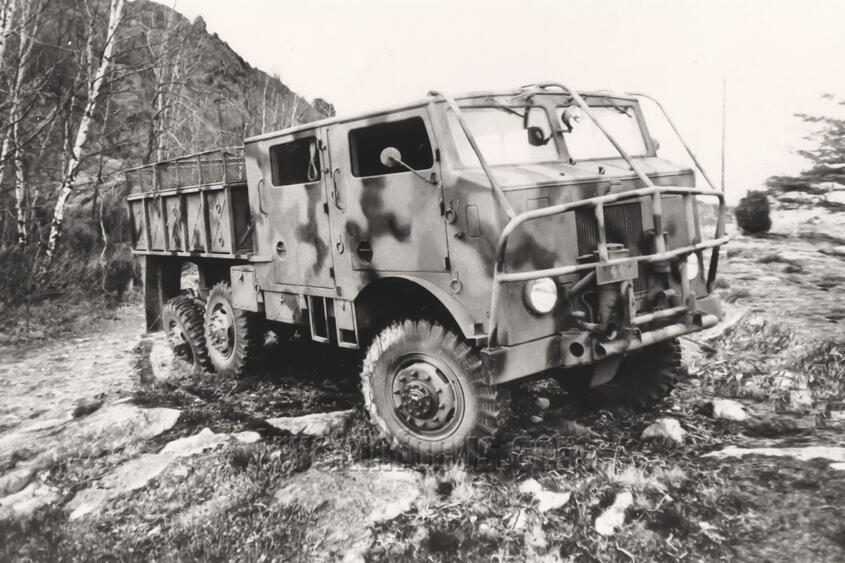
When developing diesel engines in the 1940s, Gothenburg engineers opted for the prechamber process, as it promised smoother running and produced fewer exhaust gases than the direct-injection engine. In 1946, the time had come: Volvo trucks could now be equipped with the 100 hp VDA and VDB (130 hp) diesel engines. Externally, the diesel vehicles differed from the gasoline models only by a "diesel" badge on the grille.
Four years later, Volvo made the move to direct injection. Cold-start problems had been solved in the meantime by a preheating device, and the engineers had also come to grips with smooth running. In 1950, a direct-injection engine with the designation VDC was introduced and very quickly became the standard engine. In terms of consumption, reliability and service life, it had a clear advantage over the prechamber versions.
The fifties
The first new truck development after the war was the L 34 in 1950 in the 2.7 to 5.2 ton weight class, which replaced the "Pointed-Nose" trucks built since 1939. In design, it was almost a twin of the successful PV 444 passenger car, only larger. Under the hood, the proven pre-war technology with gasoline engine and four-speed transmission worked. By 1958, around 7,000 units had been sold.
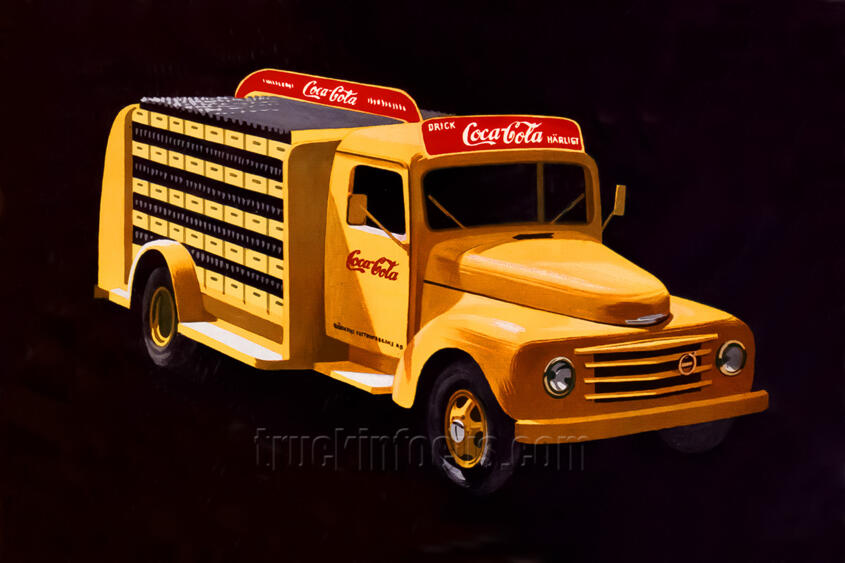
After that, the "Round-Noses" were replaced in the heavy weight classes. In 1951, the L 39 was the first Volvo with a proper name: "Titan". This name had been determined by a public competition. The newly designed hood remained unchanged until 1973, but the technology underneath changed. In 1953, the Titan received a newly developed 150-hp direct-injection engine with a displacement of 9.6 liters and, initially, a transmission bought in from Spicer. From 1956, Volvo offered an alternative in-house transmission with crawler and overdrive. The initially hydraulic brake system was soon replaced by a compressed air system. The engine was already prepared for a turbo. Thus, a 185-horsepower turbo version was added in 1954. However, it took some time of trials and testing before the exhaust gas turbocharger worked reliably. The result was convincing: with 25 kilograms more weight and only slightly more fuel consumption, torque increased from 427 to 528 lbft. Without a turbocharger, this increase in power would have required an eight-cylinder engine with much higher weight and fuel consumption. The Swedish manufacturers were pioneers in this respect. German competitors, for example, took more than 20 years to catch up.
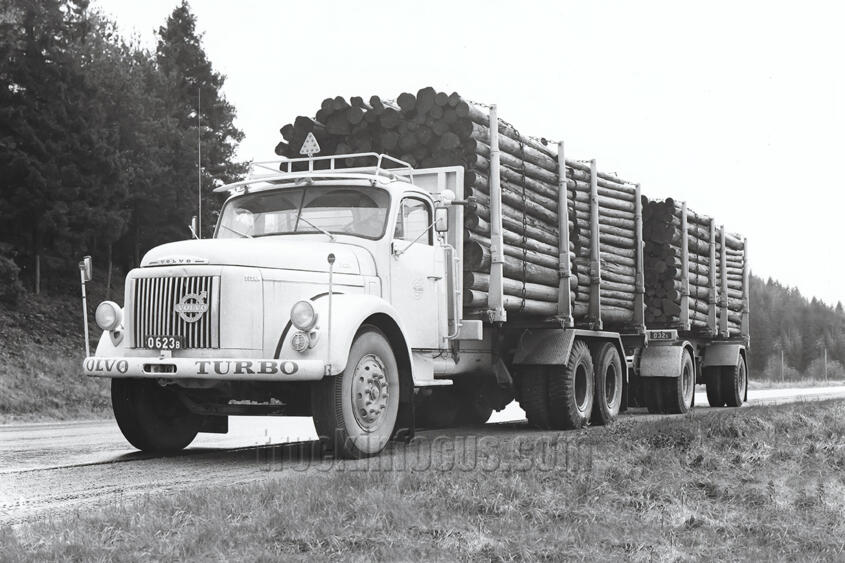
Titan production from 1951 to 1959 totaled just under 20,000 units. In the weight classes below the Titan, the "Viking" was introduced in 1953 in the L 385 and L 485 variants. Externally, there were no differences to the Titan, but smaller engines of 100 to 150 hp operated under the hood. The direct-injection engines were combined with synchronized transmissions and new axle drives such as the Norrland double axle under Eaton license. The total number of units produced in the Viking series from 1953 to 1965 was 40,238. In 1954, the conventionals, which were still far superior in numbers, were joined by a cab-over-engine model designated the L 3851 Viking. Its rounded, non-tilting cab was supplied by outside coachbuilders. Unit numbers remained low: by 1962, only 370 of these cab-overs saw the light of day.

For the military, Volvo developed a successor to the TPV model in the 1950s along the same lines: a light truck chassis with four-wheel drive and modified passenger car body. The TP 21 became known as the "Sow" and about 700 examples were delivered to the Swedish army. The TL 31 artillery tractor received the Titan's 9.6-liter, 150-hp diesel engine. This 6x6 vehicle was built in 920 copies and is still in service with the Swedish Armed Forces today.
In the mid-fifties, Volvo renewed its mid-size models. The hood of the L 34 model was enlarged to make room for the more powerful engines in the 8- to 12-ton class. The L 360 and L 365 models, as well as the L 370, L 375 and 475 (the 0 stood for gasoline engines, the 5 for diesel engines) were now given names: Brage, Starke and Raske. Gasoline and diesel engines from 90 to 120 hp were offered. They were successfully produced until the mid-1960s, albeit with some technical changes, such as the replacement of the constant mesh four-speed transmission with a synchronized ZF transmission. Increasingly, these vehicles also went to non-European countries. Photos from Malaysia and South America circulate on the Internet showing them transporting heavy loads of timber, for example, evidence of the robust construction of the frame and axles. By the mid-1960s, total production of Brage, Starke and Raske models amounted to more than 30,000 units. From 1965, they were given a radiator grille with vertical struts adapted from the larger models and the type designations N 84 and N 85.
